
Three weeks isn’t much time to sample such vast countries as Argentina and Chile, but within the huge scale, a hop from Buenos Aires to Santiago looked reasonable. Iguazu Falls to the north and Bariloche to the south created a jagged route from east to west. This allowed us to sample enough to know we want more.
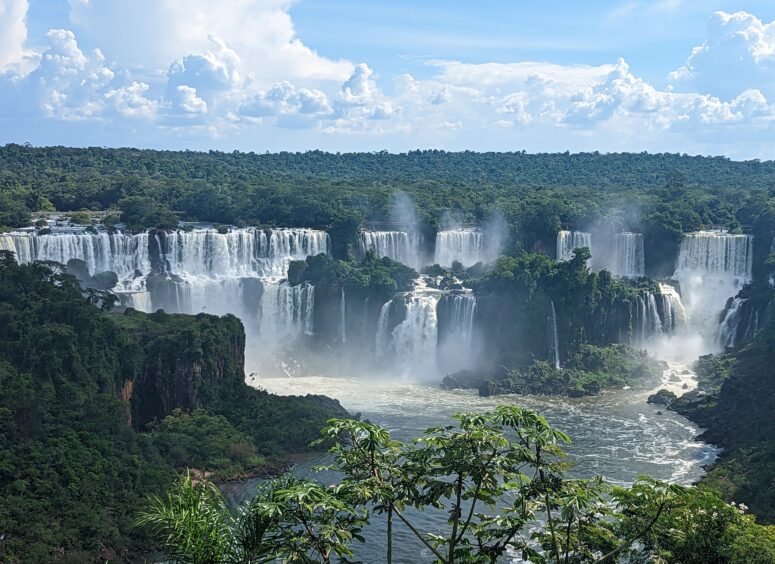
The focus of our trip was Iguazu Falls as we were joining a friend who was attending a conference on the Brazil side. We wanted to see it all: see Southern Patagonia, jump over to Antarctica, hike the W circuit, and visit the Atacama Desert. A quick look at the map scaled the plans to a human level. We chose to cover a hearty east-west slice of Argentina and Chile in three weeks. We actually spent a few days on the Brazil side of Iguazu Falls, but I don’t count that as visiting Brazil since it was such a tiny part of that country.
We landed on the following itinerary.
Two full travel days from San Francisco brought the total to 20 days.
We scheduled three days to recover from jet lag and see the highlights of the city at our leisure. We also had one day at the end before we flew home. These four days allowed us to see the following sights in several neighborhoods. There are many other sights to see; these are the ones we visited.

Downtown area
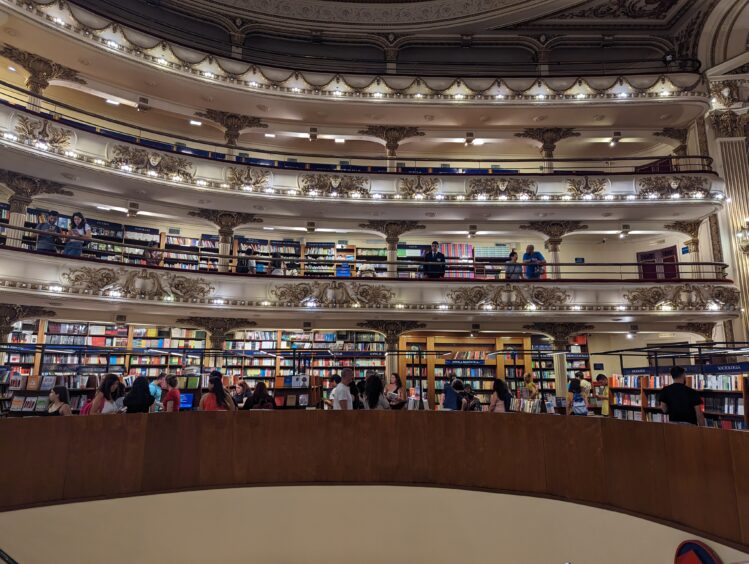
Recoleta & Palermo neighborhoods
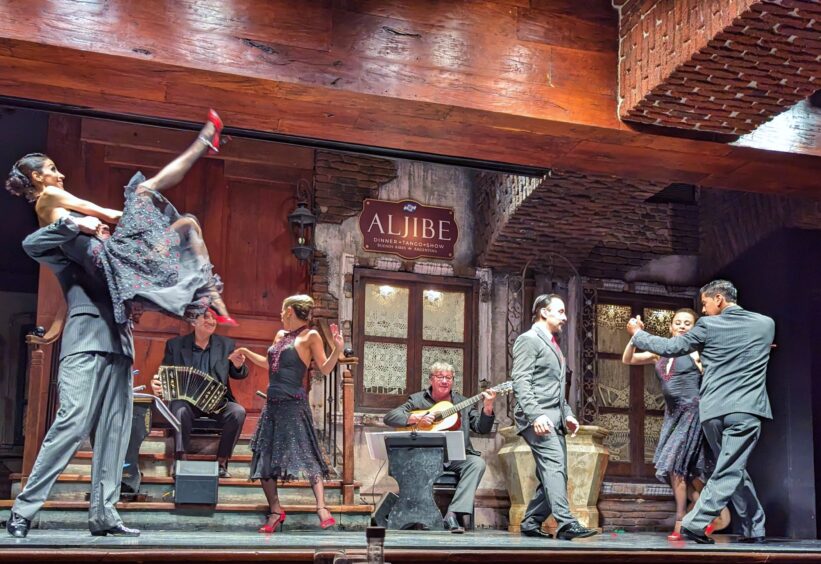
Tango is a big part of Argentinian culture, so it was high on our list. I was put off by the late start of most of the shows, and was very happy to find the “Aljibe Tango and Folklore Show with Dinner.” It started at 7 P.M. and I booked it through the Get Your Guide app. You might be able save some pesos by booking direct, but I preferred to pay a little extra to be sure of what I was getting. The tango dinner show was a highlight of our stay. The inclusion of the folklore component, which is becoming a lost art, was special. The dinner was surprisingly excellent, since many dinner shows focus more on the show than the food. We dressed up a bit for the elegant venue, but tourists wore a wide range of clothing.
Our meandering stops happened to take us to the two most recommended neighborhoods, Recoleta (the cemetery and El Alteno bookstore were located there), and Palermo. We also saw the port area and San Telmo. For this reason, we didn’t think the hop-on, hop-off bus tour (red bus) we did was worth it. It didn’t go very close to the sights we wanted to see, and Ubers and taxis are so inexpensive that it was better for us to go directly to the destination we wanted, and then wander around a bit.
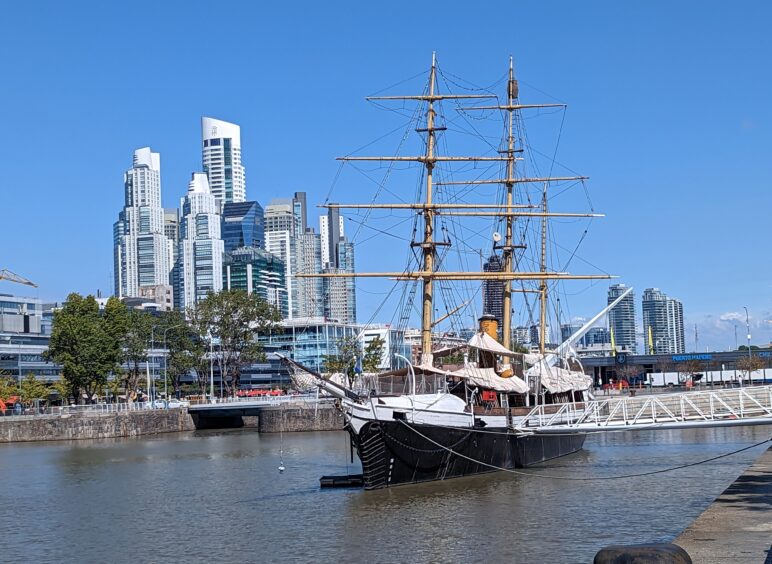
The 20-minute self-guided audio tour of the “Heart of Colonial Buenos Aires” on the Voice Map app was very good. My husband and I shared a set of ear buds to listen to the narration. It included the Plaza de Mayo, Casa Rosada, and other historic sights in the area around the plaza and Florida Street.
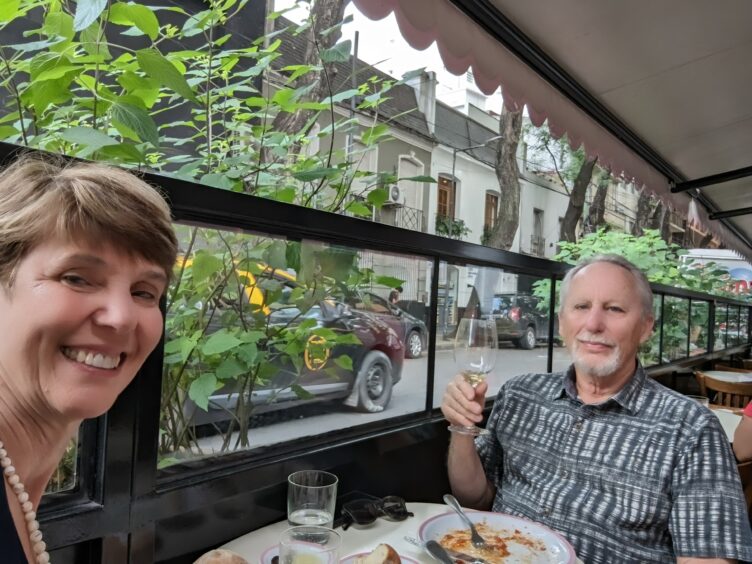
I tried to get into the famed Don Julio restaurant in the Palermo district, but it was booked months in advance. I was able to secure a lunch reservation at a nearby rival restaurant, El Preferido, a few weeks before our arrival. It was an excellent meal.
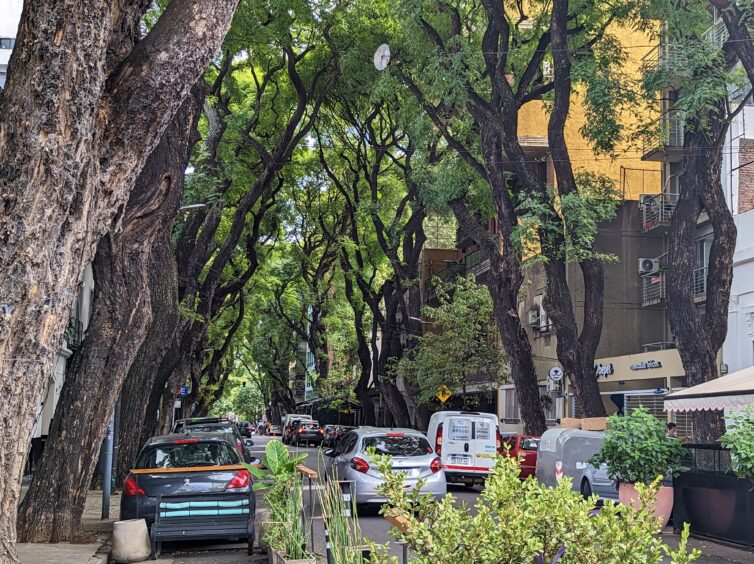
On our return to Buenos Aires, we stayed at the Sofitel in the Recoleta district and wandered into Fervor, a subtly elegant restaurant with delicious food and impeccable service. We were early, so we were lucky enough to get in without a reservation.
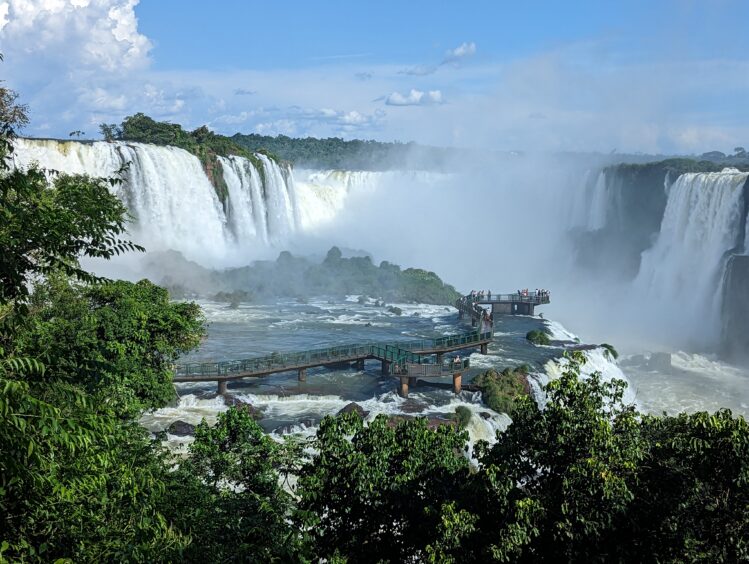
Our visit to the impressive Iguazu Falls surrounded by sub-tropical jungle and steamy heat is detailed in the following article. We were based at Foz do Iguacu on the Brazil side, saw the waterfalls from both Argentina and Brazil and had a day to do a hiking/kayaking trip.
Santiago was different from what I expected and the obvious tension in the air, protests and graffiti plastering every vertical surface led me to a new appreciation of how the people of this great city are affected by social tensions. It wasn’t always pleasant, and I didn’t always feel as safe as I have in other parts of South America, but I learned a lot. Things have settled down a little since the demonstrations of 2019, but the unrest still bubbles under the surface and protests were still a frequent occurence.

I was most impressed with the Chilean Museum of Pre-Columbian Art (Museo Chileno de Arte Precolumbino). I have a special interest in the subject after living in Peru for two years and visiting some archeological sites recently. They have an excellent display of both Chilean indigenous artifacts and a comprehensive collection from Americas that ties the history of migration together.
Wine tasting in the Maipo Valley with Stamps Tour (Get Your Guide Tour) was another highlight. It was wonderful to get out of the city to see the surrounding area, with vineyards dominated by the towering Andes. We tasted a nice range of wines from the large Undurraga Winery to the homey Zinfandel restaurant and Terra Mater Winery to a small family farm. It was an unexpected treat to find a small but representative display of indigenous artifacts at Undurraga Winery.
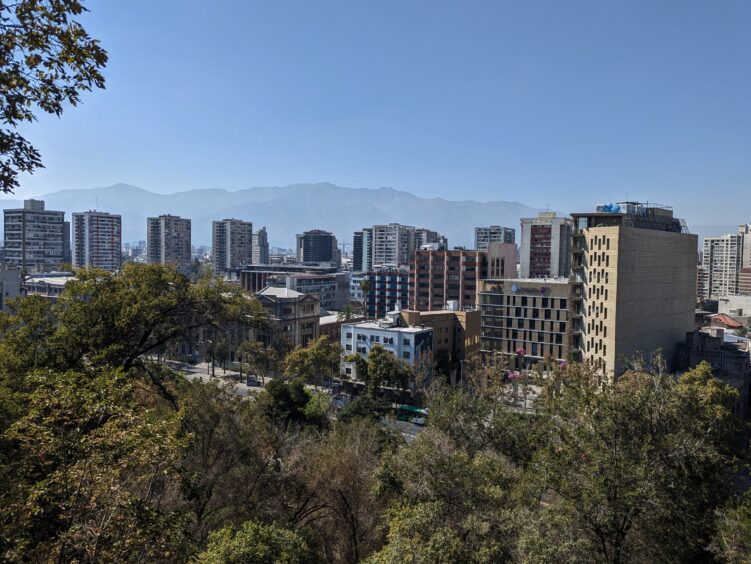
We filled in with other activities, including a short hike up to see the views of the city from Santa Lucia Hill and a visit to the nearby gorgeous National Library building, which had several interesting historical displays. We took the Pio Nono Funicular to Cerro San Crisobal and stretched our legs on a hike down from the top of the Santiago Metropolitan Park. On our way to the funitel, I was delighted to find a large statue of naval hero Miguel Grau, who is also featured prominently in many statues and street names in Peru.
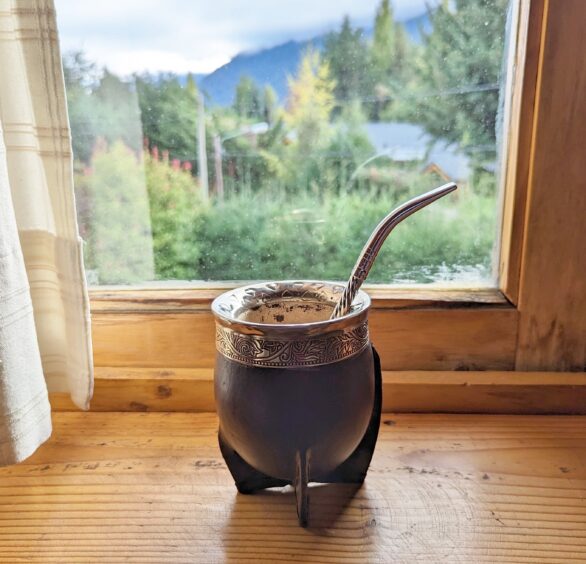
Our visit to San Carlos de Bariloche in the Lakes District of Northern Patagonia was stunningly beautiful, with a parade of gorgeous blue lakes nestled into folds of the Andes. This was one of our two favorite stops, and we slowed down to enjoy the crisp, fresh mountain air. Our visit to the Bariloche area is detailed in the following article.
Bariloche was where I was introduced to the magic of mate, the traditional tea of Argentina made from yerba mate. I looked for it in Buenos Aires but it wasn’t as obvious as it was everywhere in Bariloche, where you can hardly go anywhere without seeing people sipping from silver straws in the distinctive cups made from gourds. The I saw people on hikes, at the tops of mountains, standing in line, working in offices, sitting in parks and walking down the street sipping mate. I finally got to taste the earthy, slightly smoky, somewhat bitter beverage that reminded me faintly of lapsang souchong tea from China. I liked it very much, though the caffeine gave me a wallop. I searched high and low before finding the perfect straw and cup in a shop in Villa la Angostura.
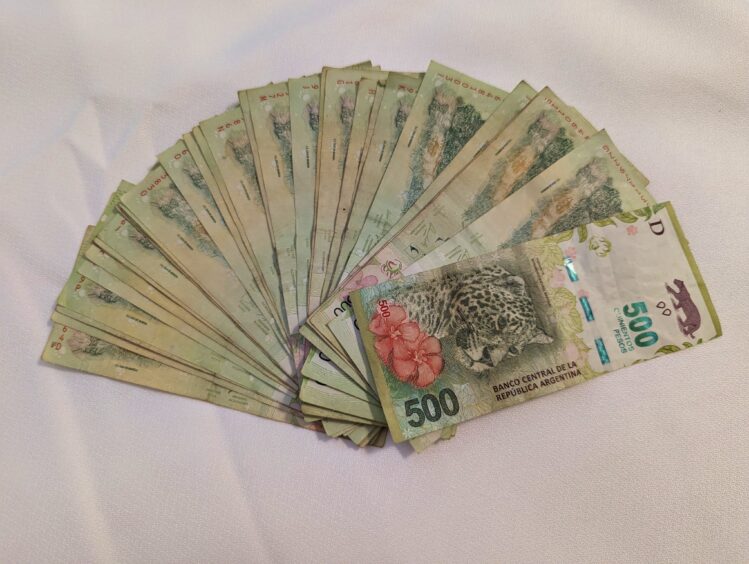
If you’ve traveled as much as I have, you probably think you know all there is to know about how to get money when you’re traveling. It’s all different in Argentina. Rather than try to explain it, I’ll refer you to an excellent article in Sol Salute, which will explain the current situation and gets updated frequently: Money In Argentina: Currency Exchange, The Blue Dollar, And Getting The Best Rate. Massive changes are happening in 2023 with the election of a new president and his economic reform agenda, so be sure to look at current sources of information.
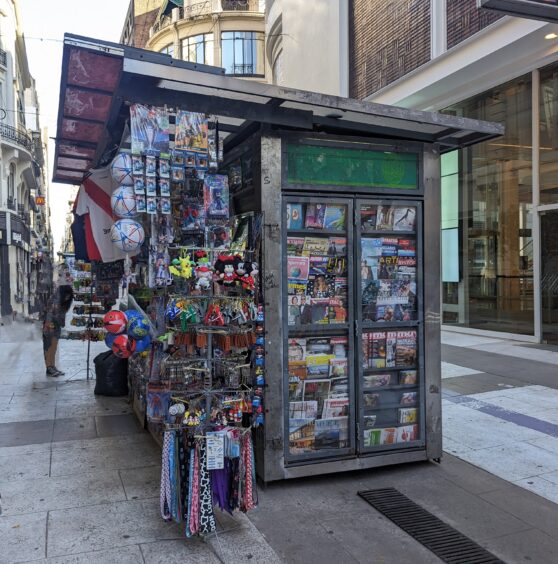
I set up a Western Union account before I left and transferred money in case we needed it. Since we didn’t use it, I cancelled the transfer when I got home. The money was returned to my bank account. We were able to use our Visa credit cards for hotels and larger restaurants, and used pesos for small cafes, taxis, and other transactions.
We brought crisp new US$100 bills from our bank at home and exchanged them for pesos. Dirty, torn or small bills may result in a lower exchange rate or may be refused. Arriving in Buenos Aires on a Saturday when Western Union offices were closed for the weekend meant that we had to find another way to get cash. We didn’t find any accessible ATMs, despite several showing up on Google Maps. Either they were not there at all, were damaged, or were locked in the lobby of a bank for the weekend.
We were staying at an Ibis Hotel near Florida St, an area known to be populated with money changers. I kept hearing hawkers saying, “Cambio, cambio,” (cambio means “change” in Spanish) and finally realized those were the money changers. When I asked a hawker for the rate, they showed it to us on their phone. I verified on my Android phone using the Easy Dollar Blue app (Dolar Blue Hoy is another app) and accepted the offer. It all seemed kind of sketchy, but a hawker brought us to a kiosk with a tiny back room. Inside the room, the money changer sat by a money sorting machine that spit out stacks of pesos. Mission accomplished.
In Bariloche, our hotel directed us to a nearby money changer. In Brazil and Santiago, we used ATMs as we would in any other country.
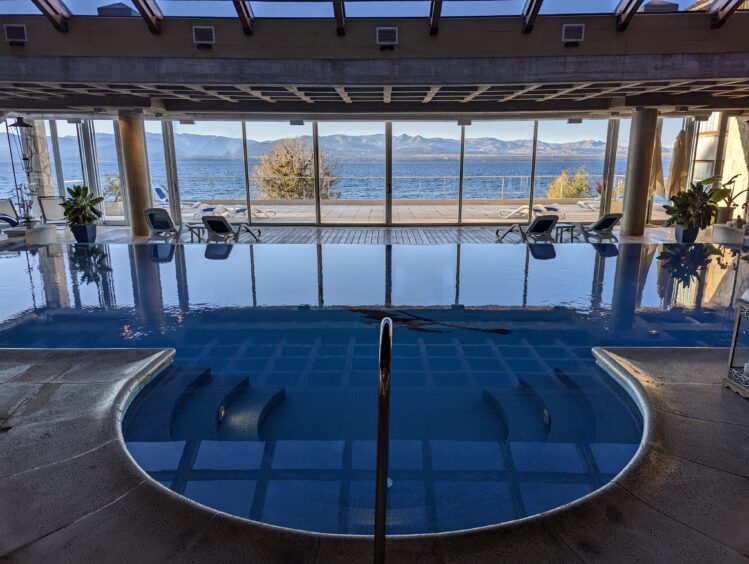
We stayed at a full range of Accor hotels, including the Ibis Styles Buenos Aires Florida Hotel in Buenos Aires at the beginning of our trip, the Mercure Santiago Centro in Santiago, and a splurge at the Sofitel Buenos Aires Recoleta in Buenos Aires on our last two nights.
Lodging and transportation details for Iguazu Falls and Bariloche are included in the individual articles on those destinations.
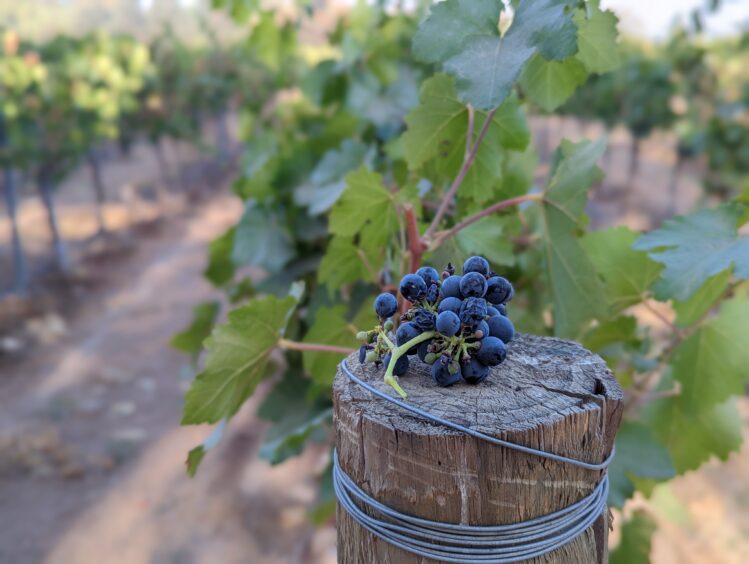
We flew United business class from San Francisco to Buenos Aires via Houston. We lucked out with a discount fare by using United Vacations. This included our airfare and initial stay at the Ibis Hotel for four nights. Be prepared for high prices for flights.
For all our other flights, we flew Aerolineas Argentina, the national airline of Argentina.
There are two airports in Buenos Aires. While Ezeiza International Airport (EZE) is the main international airport, both international and domestic flights use both airports. Be sure to scrutinize the name of the airport carefully. The (usually) domestic airport is Aeroparque Jorge Newbery (AEP). They are about 40-60 minutes apart, but it varies due to traffic conditions and could be longer. We found that even with round-trip tickets, we sometimes flew into one airport and out of the other.
We took Uber and taxis within the cities except Bariloche, where we rented a car from Hertz. In Buenos Aires and Santiago airports, we secured a taxi from the airport kiosks and paid with a credit card.

If you’re used to traveling in Mexico, Costa Rica, or Peru, be prepared for less English to be spoken. In some hotels, hardly any staff spoke English. You don’t need to learn much, but a few key phrases will help. I used the Google Translate app and downloaded the languages I needed. I also created a stored phrasebook of words that I could refer to quickly in the app. For this trip, it was helpful to have Spanish and Portuguese downloaded. In Iguazu, many are bilingual Spanish/Portuguese speakers since Portuguese is spoken in Brazil.
Our slice of Argentina and Chile in three weeks gave us a taste of the southern end of South America. We look forward to exploring more, especially Southern Patagonia and perhaps Antarctica. We found the people friendly, the food delicious and the scenery stunning and varied. A slice of Argentina and Chile in three weeks was a good amount of time for an introduction to this diverse, distant land.